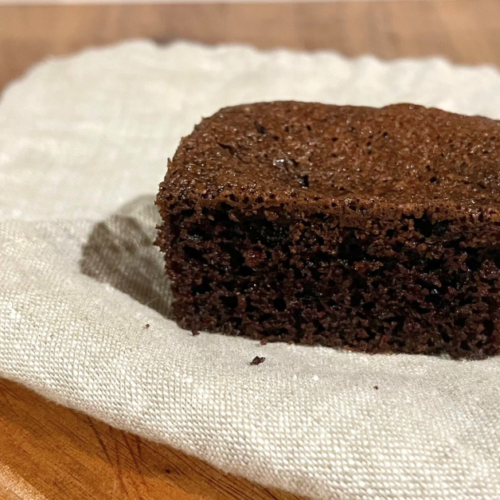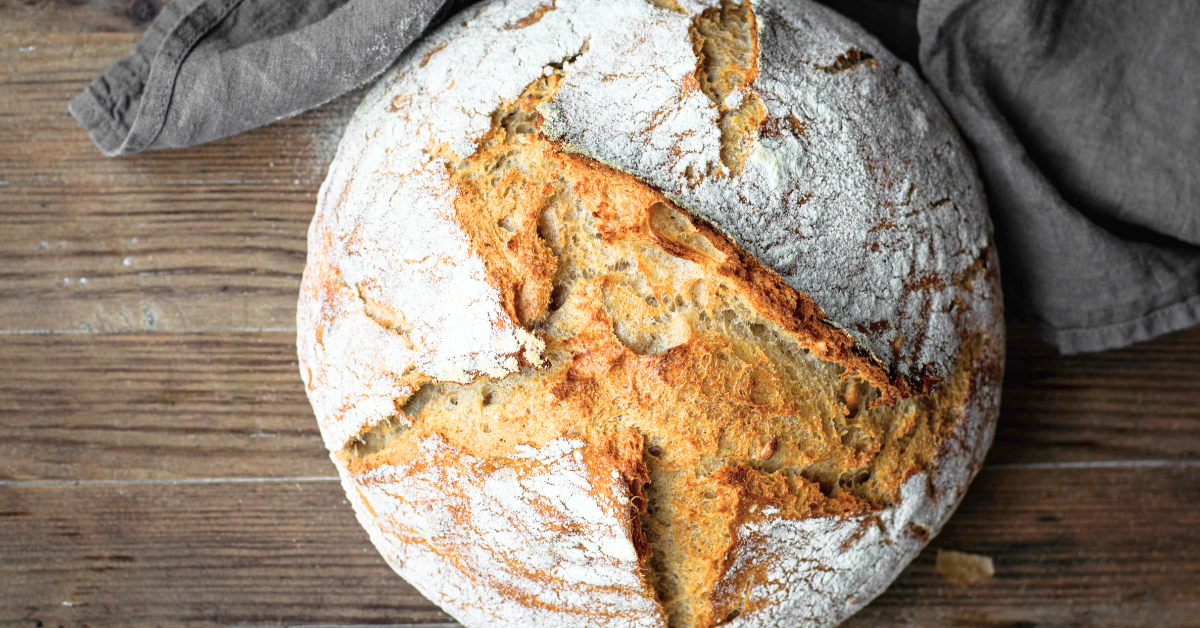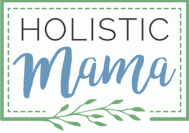-
Gluten-free Almond Flour Brownies
Category: Gluten Free
These gluten-free almond flour brownies are a lightly sweetened chocolate treat. Made with almond flour, coconut oil, maple syrup and eggs you can feel good about eating this healthy dessert. This one is more of a “cake-like” brownie texture and works well in a brownie pan like this one.

Almond Flour Brownies
Ingredients
- 2 1/2 cups Organic Almond Flour
- 1/2 tsp sea salt
- 1 tsp baking soda
- 1/3 cup organic cocoa powder
- 1/4 cup coconut oil butter, or ghee
- 3 eggs
- 1 cup maple syrup
- 1 tbsp vanilla extract
- 1/2 cup Organic Chocolate Chips
Instructions
- Preheat oven to 350 degrees.
- Grease a 8×8 square baking pan.
- In a large bowl combine almond flour, slat, baking soda and cocoa powder and mix together.
- In a separate bowl mix together oil, eggs, maple syrup, and vanilla.
- Mix wet ingredients into dry ingredients and stir.
- Bake for 30 minutes
If you like chocolate recipes, try these gluten-free chocolate zucchini muffins.
Thank you for reading this post, don't forget to subscribe to stay in the loop. If you are looking for some of the healthy tools and resources mentioned in my articles, take a look at my healthy shopping guide.
Some of our links are affiliate links, which means if you click and buy, I earn a small commission. The price is the same for you, though. Thank you!
You might also like these posts…
-
Soups that Boost Immunity
Category: Real Food
Do you want to make some soups that boost immunity? Food is medicine and these three recipes are perfect examples of that. The warming nature of soup recharges the digestive system which is important in fighting off illnesses. The digestive system is our defense system and this helps keep it working at its best. There are a few more reasons why these soups are supportive to the immune system. So, what is in a soup that boosts immunity?
#1 Vegetables
Vegetables are arguably the healthiest foods that exist. You've probably never heard of a diet that says not to eat vegetables, have you? It's pretty much a given that vegetables are good for you. They are full of vitamins, minerals, and a long list of other health bearing nutrients. The first rule in eating healthy is to eat lots of vegetables (no matter what you are – vegan, paleo, gluten-free, etc.). Cooked vegetables are easy to digest which makes it much less work for the digestive system to assimilate them into the body.
#2 Bone Broth
Bone broth is an excellent source of minerals, like calcium, phosphorus, magnesium, and potassium, and they are easily absorbed in this form. It’s also rich in glycine and proline, amino acids not found in significant amounts in muscle meat. Another benefit of bone broth is that it also contains chondroitin sulphates and glucosamine, the compounds sold as supplements to reduce inflammation, arthritis, and joint pain. When bone broth is made with soup bones or marrow bones it will also be a good source of gelatin which comes from the collagen, a protein found in connective tissue of vertebrate animals, including marrow, cartilage, tendons, and ligaments. When making bone broth, be sure to use grass-fed organic beef and pastured organic chicken (if you can get your hands on some chicken feet, throw that in the broth for some added health benefits).
#3 Garlic
Garlic is full of health benefits, it is one of my top choices in immune boosting foods. I really use this stuff for everything. It's great to take garlic if you or your child feels sick but you don't know what it might be. Garlic is anti-everything – anti-viral, antibacterial, etc. that's why its always a good choice when you don't feel well. In the Winter, eat as much garlic as you can (my kids and I probably smell like garlic for half the winter but I don't care because it keeps us healthy). These soup recipes below all contain this health bearing food!

Bone Broth with Vegetables
Simple bone broth soupIngredients
- 6 cups bone broth
- 3 cups chopped vegetables – carrots celery, potato, mushroom, kale
- 4 cloves garlic minced
- sea salt to taste
Instructions
- Heat broth in a stock pot, add chopped vegetables. Simmer until veggies are soft.
Garlic Soup
Ingredients
- 2 onions chopped
- 20 cloves garlic peeled and crushed
- 4 tbsp. grass fed butter or coconut oil
- 6 cups chicken bone broth
- 4-6 cups chopped veggies – anything you have on hand: carrots potatoes, celery, zucchini, parsnips, etc.
- 1 tsp. thyme
- sea salt to taste
Instructions
- Heat oil or butter in a stock pot.
- Saute onions and garlic for 5 minutes.
- Bring pot to a boil and simmer for 10 minutes or until vegetables are soft.
- Puree with an immersion blender or transfer to a blender to puree.
Cauliflower Kale Soup
Ingredients
- 1 large head of cauliflower
- 5 tbsp. coconut oil
- 1 bunch of kale
- 1 yellow onion
- 2 stalks celery
- 4 cloves garlic
- 7 cups vegetable stock or chicken bone broth
Instructions
- In a stock pot, heat the coconut oil.
- Saute the onion and garlic for 5 minutes.
- Add stock and vegetables, bring to a boil.
- Simmer for 10 minutes or until vegetables are soft.
- Puree with an immersion blender or transfer to a blender to puree.
Thank you for reading this post, don't forget to subscribe to stay in the loop. If you are looking for some of the healthy tools and resources mentioned in my articles, take a look at my healthy shopping guide.
Some of our links are affiliate links, which means if you click and buy, I earn a small commission. The price is the same for you, though. Thank you!
You might also like these posts…
-
Why Is Everyone Going Gluten-free?
Category: Self Care
Why is everyone going gluten-free? Have you ever wondered why it seems like everyone is giving up gluten? You might be thinking, how did this allergy all of a sudden come into existence and effect so many people? The reality is that only a small percentage of people actually have an allergy to gluten but a large majority of people see positive results from eliminating it.
Celiac Disease
Celiac disease is an allergy to gluten which is found in wheat, rye, barley and sometimes oats. People with Celiac disease must avoid gluten in their diet. If not, there are short-term and serious long-term health consequences. When a person with Celiac disease is exposed to gluten it causes flattening of the villi in the small intestine. The villi are the finger like projections responsible for absorbing nutrients. The most common symptoms include bloating, weight loss, and diarrhea. There are a number of other symptoms that may occur as well, including:
- fatigue
- dry skin
- rashes
- smooth tongue
- abdominal discomfort
- joint pain
- headache
- anemia
- depression
- anxiety
- tingling in hands or feet
- menstrual abnormalities
- smelly stools
- constipation
- weight gain
The main problem is that nutrients are not absorbed because of the damage done to the intestinal track. Lack of nutrients can cause an endless amount of problems. If you do have Celiac disease it is extremely important to stick to a gluten-free diet because the long term effects are serious. Some conditions associated with untreated celiac disease are esophageal cancer, lymphoma, arthritis, osteoporosis, anemia, and even infertility.
Gluten Intolerance
Celiac disease is the most serious reason why a person would want to adhere to a strict gluten-free diet. But, what if you don't have Celiac disease? Interestingly, the majority of people – including the 99% of Americans who don’t have celiac disease – also respond favorably to a gluten free diet. The small intestine is not designed to digest the large amounts of processed carbohydrates present in the standard American diet. Most of us don't have celiac disease, but a large number of people have gluten intolerance. This means your body feels better when you’re avoiding foods that contain gluten. Eating a gluten-free diet has helped a lot of kids (and adults) improve digestion and nutrition absorption.
Should You Eat Gluten Free?
Going gluten-free may seem like an impossible task. The problem is that Americans have grown so accustomed to eating breads, cookies, crackers, muffins, and packaged foods. All of these foods contain gluten unless it specifically says gluten-free. Many people complain that gluten-free breads are not as good but if you learn to make your own, it's just as delicious. You can even make your own gluten-free sourdough starter yourself. We have a variety of fantastic gluten-free recipes on this blog you can also try.
Optimally, the goal should be to reduce or even eliminate all packaged convenience foods from your diet whether or not you are avoiding gluten. If you have kids, sometimes it's unavoidable so just try to make better choices, like these packaged snack swaps. Almost all processed packaged foods are nutritionally void. Remember, because a product says its gluten-free doesn't mean that it's automatically a healthy food. There is an enormous amount of gluten-free junk food on the market. Lastly, remember it's always important to read labels to see what exactly is in your food.
Thank you for reading this post, don't forget to subscribe to stay in the loop. If you are looking for some of the healthy tools and resources mentioned in my articles, take a look at my healthy shopping guide.
Some of our links are affiliate links, which means if you click and buy, I earn a small commission. The price is the same for you, though. Thank you!
You might also like these posts…
Holistic Mama Blog

